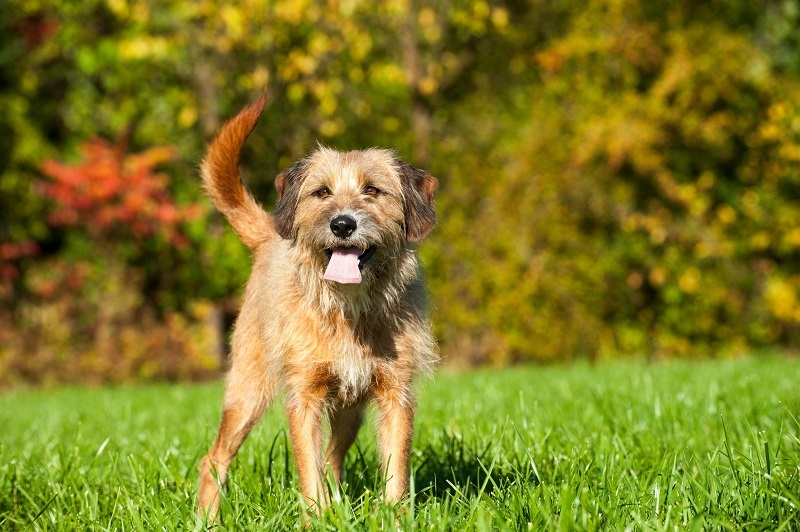We’ve all heard the quote from Josh Billings, “A dog is the only thing on earth that loves you more than you love yourself,” and this, among scores of other similar words in praise of the relationship between dog and man, serves to illustrate one of the unsung wonders of the world.
Every dog owner has examples from their own relationship and most of us look on in wonder at the amazing work done by assistance dogs, mountain rescue dogs, drug sniffing dogs, medical detection dogs (the list goes on) but it’s clear that the relationship between dog and man goes far beyond simple dependency. Indeed, the term dependency appears to indicate a one way street but from the dawn of domestication of dogs, man has become as dependent on dogs as they are on us. It seems to me that our relationship with dogs is truly symbiotic.

The respected journal of the US Society for the Experimental Analysis of Behavior, published a paper in 2008 entitled “A Review of Domestic Dogs’ (Canis Familiaris) Human-Like Behaviors: Or Why Behavior Analysts Should Stop Worrying and Love Their Dogs” in which the authors, Monique Udell and CDL Wynne, concluded that dogs are never far away from most people’s lives, but objective understanding of their behaviour is still surprisingly scarce. There are reams of publications about how to train puppies and how to employ our finely-honed nutritional understanding for humans in the formulation of therapeutic and lifestyle diets for dogs at all life stages but the detailed understanding of what makes Fido or Spot tick remains tantalisingly elusive.
Maybe one reason for that could be that dogs, and the behaviours we train into our dogs, are as varied as the people who train them. Those of us who have more than one dog at any stage, or who may have had two dogs in close succession, can point to significant differences in the personalities and inherent behavioural traits that each dog exhibits. We have recently lost a Black Labrador who could have qualified for Mensa and who recognised even cartoon characters on TV as being dogs, horses etc., and she lived alongside a Retriever/Lab cross who has never, in her eleven years, even noticed that the TV is on, let alone what images are portrayed. The Lab’s replacement ( why do I struggle even to voice that concept?) is an eight-month-old Springer puppy who already watches Countryfile with avid interest. Each of our dogs is different and each has an inherently different skill-set.
More than any other generation, humans today love to anthropomorphise their dogs –a reference to how we like to treat them like humans – by actively seeking out foods for them with human characteristics on a scale that runs from deliberately choosing foods with a chicken, fish, grain-free or even vegetarian content to seeking out foods that are portrayed as being served on silver platters and contain braised beef or sumptuous chicken. This was brought home to me when the first refugees started crossing the Mediterranean and, when they were impounded on the shores of Southern Italy, one asked why we would serve out pets food from silver tureens but wouldn’t rehome his family? Many would say that our society has gone too far in the way we treat our animals but, for the first time ever, we now have stringent policies in place to protect animals from inhumane practices, from cruelty and neglect and to accord animals, whether as food animals or pets, the respect and dignity that they deserve. Clearly, the line between doing enough and overdoing it is a fine one.
The evolutionary development of dogs is particularly interesting because, instead of natural selection by the environment, artificial selection by humans has been responsible for the hundreds of breeds of domestic dog that exist today, each with different traits and abilities and there is evidence that deliberate selection for desirable physical and behavioural traits has brought about other changes in dogs’ social behaviour as a sort of unexpected bonus. This poses an interesting question – has the propensity of dogs for human social interaction led to what scientists call convergent evolution, where the two genetically distinct species of man and dog have been shaped by similar selective pressures? As dogs have become more responsive and adaptive, so has man – leading to a truly symbiotic relationship.
Leaving aside centuries of genetic development, environment also plays a major role in shaping both the dog’s and the human’s behaviour. Our Springer puppy rapidly learned to scrabble at our back door as a signal that she wanted to be let out and we responded by tying some small cow bells to the handle so that her signal could be heard wherever we were in the house? The result was that she avoided the need to urinate in the house and we avoided the need to clear it up – it’s not rocket science but just another example of symbiotic adaptation of both the species.
In the study referred to earlier, the authors write, “ In many cases reinforcement depends on the dog’s ability to recognize social stimuli presented by humans, subtle human gestures that may serve as discriminative stimuli for certain behaviors which command a direct and specific response from the dog.”
As I write this, the Springer puppy is sitting at my feet watching my face for the next of those subtle gestures and, in a quiet and reflective moment, maybe I should consider who has been training whom for the last few months.


